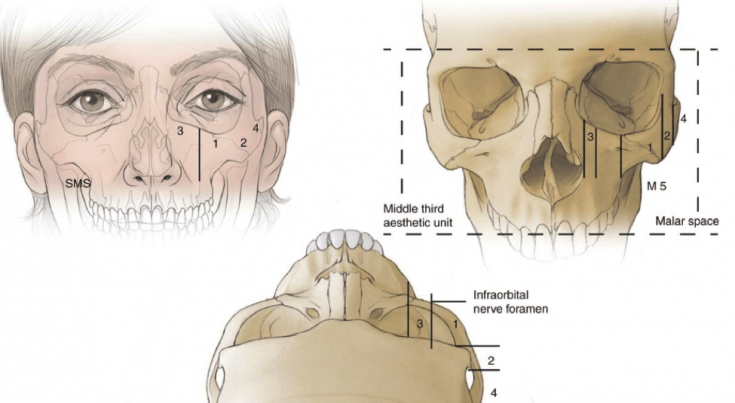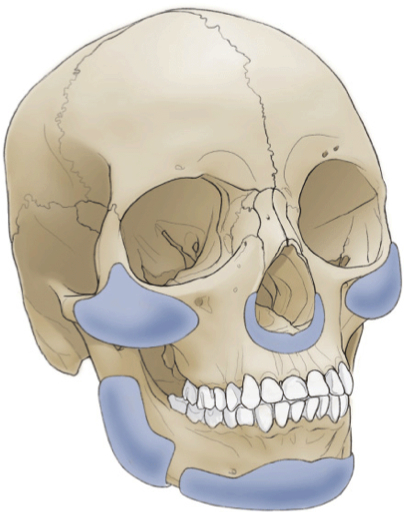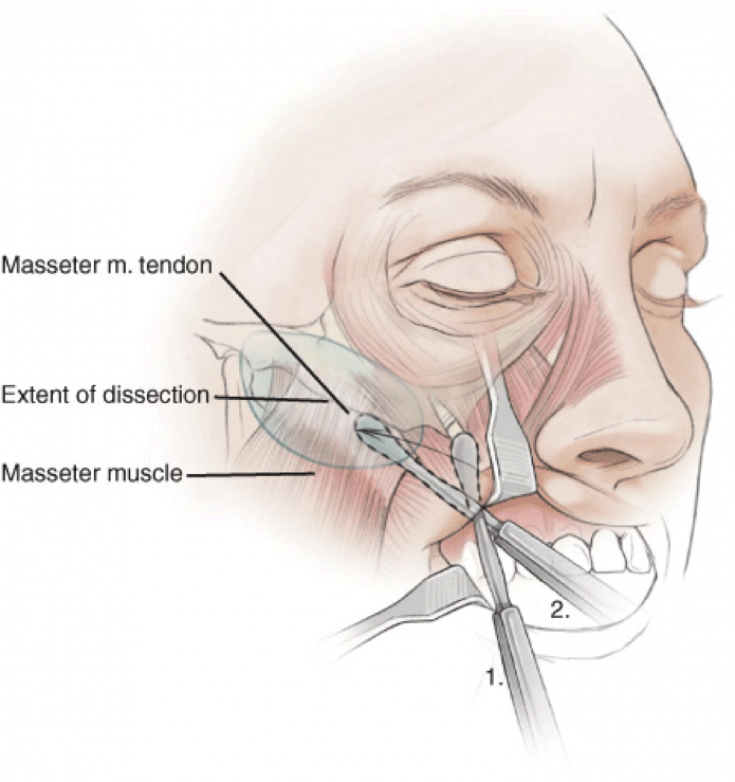Despite the fact that dermal fillers are becoming more and more popular, plastic surgery remains just as in demand. Alloplastic augmentation gives a really persistent, pronounced and reliable effect that does not need to be maintained every six months.
Augmentation with implants of the middle and lower third of the face allows you to turn back decades, give the face an ideal shape and balance. Correction of volume deficiency in specific regions and zones is aesthetic balance.
Read about who is indicated for alloplastic augmentation of the middle and lower third of the face at estet-portal.com in this article.
- Indications for alloplastic correction of the middle third of the face
- Preoperative preparation for alloplastic augmentation of the middle third of the face
- Media implant augmentation procedurethird face
Indications for alloplastic correction of the middle third of the face
Changes in the volume and contour of the face are easily predictable using a practical model of anatomical analysis by skeletal zones (Fig. 2).

Fig. 2. Anatomical zones of the middle third of the face
- Zone 1
The implant is placed on the main body of the zygomatic bone, creating a pronounced contour of the cheekbones. This correction is indicated for young patients who want to emphasize the cheekbones.
- Zones 1, 2 and 3
Volumization of the lateral and suborbital region is performed in patients with hereditary or post-traumatic maxillary insufficiency with suborbital and zygomatic flattening.
Read the most interesting articles in Facebook!
- Zone 2
The expansion in the middle third of the zygomatic arch will visually expand the upper third of the face. This correction is indicated for patients with a narrow upper half of the face.
- Zone 3
Increase in volume and shape in the paranasal cavity and suborbital areas is indicated for patients with tired facial appearance. In addition, augmentation of this zone allows correction of the nasolacrimal trough.
Read also: The perfect seam: the main characteristics of different types of suture materials
- Submalar area
The lower half of the middle part of the face can be called the submalar zone, which is located under the lower border of the zygomatic bone and lies on the surface of the masticatory muscle. ;exhausted appearance and loss of youthful fullness of the middle part of the face. Preoperative preparation for alloplastic augmentation of the middle third of the face
The fundamental most important principle in all alloplastic surgery using implants is
complete understanding of the patient's needs.
Limitations as well as possible complications after surgery, as well as alternative therapies such as injectable fillers and autologous fat grafts, need to be carefully discussed.
Read also:
Earlobe remodeling: L-plasty and Y -plastic Computer imaging
computer imaging program
required along with "homework" when patients bring photos of friends, family, earlier periods of their lives, as well as photos of models, actresses and the like, who have in your opinion, ideal contours in the area of the middle third of the face. Augmentation procedure with implants of the middle third of the face

Alloplastic augmentation of the middle third of the face requires
general anesthesia
. Copious injection of local anesthetic at the anatomical dissection promotes optimal hemostasis and mild anatomical flat dissection. 20 to 30 ml of lidocaine 0.25% with epinephrine 1:600,000 is injected into each implantation site.
Mutual agreement is reached prior to surgery on the exact location, size, and shape of the implant, as determined by a computer-generated image, as well as photographs brought by the patient.
Read also:
Alternative tummy tuck: how to work with women after childbirth The
3 augmentation approaches
middle thirds give the best results:
Intraoral;
- From under the ciliated edge of the lower eyelids;
- Transconjunctival. It is also possible to perform implantation
through the superficial fascia of the musculoaponeurotic system
(SMAS) in the zygomatic region.

Fig. 4. Minimally invasive intraoral dissection for midface implant placement
The intraoral approach to midface alloplasty is the most effective, safest and easiest to perform.
Intraoral placement of implants in the area of the middle third of the face allows
to minimize trauma
of surrounding tissues during the procedure, which reduces the risk of contractures and accelerates healing. More useful information on our
YouTube-channel:







Add a comment